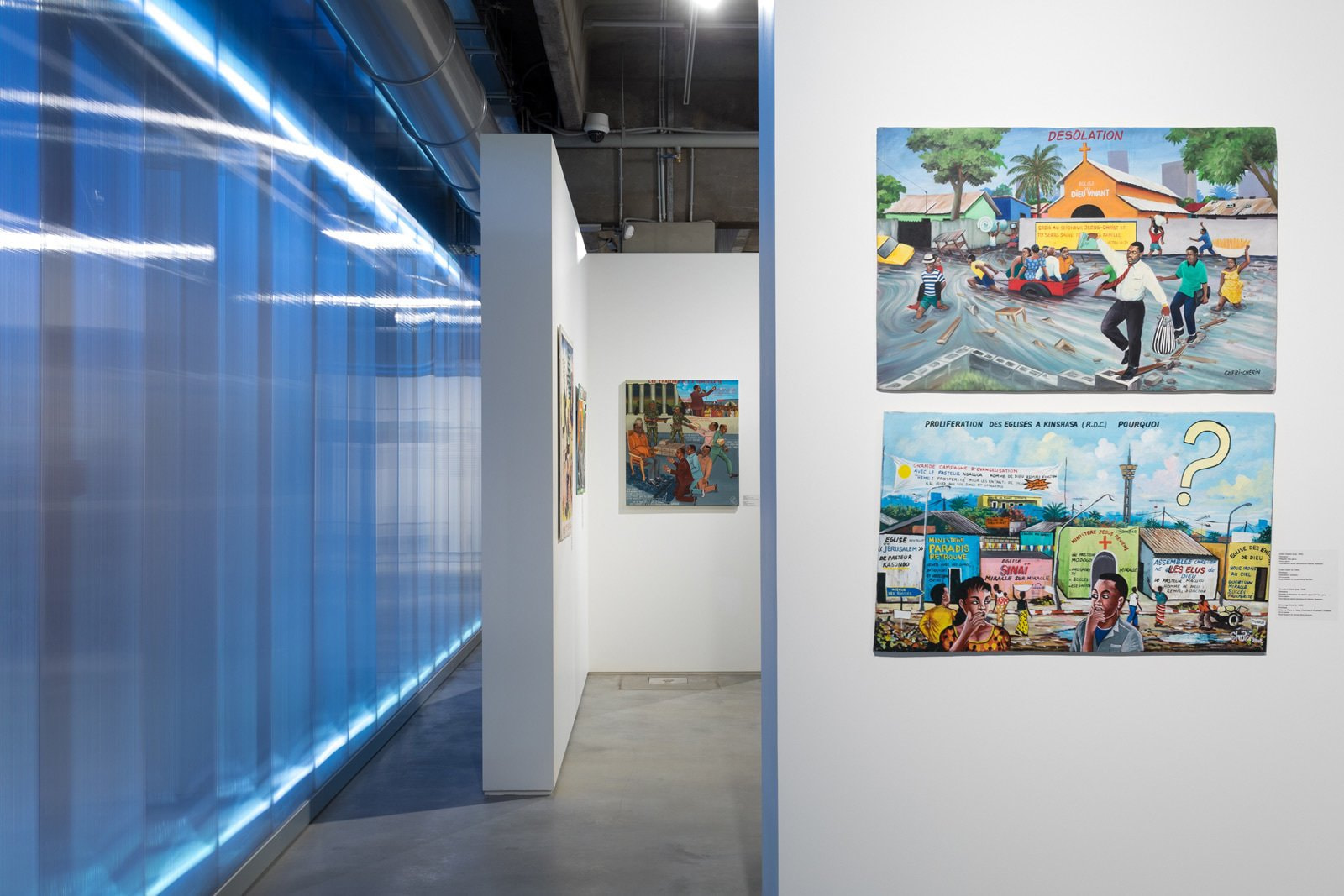This is not a Collection by Bogumil Jewsiewicki
Africanist Bogumil Jewsiewicki spent many years working in Congo and amassed a huge collection of popular paintings, which was later acquired by the Royal Museum for Central Africa, Tervuren. This is an edited version of his text from the catalogue Congo Art Works: Popular Painting (Brussels: Racine, 2016), published to mark the exhibition of the same name.
It should be easily apparent to readers that what I am doing here is paraphrasing Denis Diderot, René Magritte, and Michel Foucault. I trust that the subsequent text will persuade them that this is not a pointless exercise in erudition. Magritte’s The Treachery of Images reveals the glaringly apparent fact that the image of a pipe is not a pipe at all, while Diderot makes it clear that a story needs someone to listen to it in order for it to exist. A written story is not strictly speaking a story, a figurative representation on a piece of fabric is not strictly speaking a painting unless there is a specific venue for it to be put on display, an agent to judge how aesthetically successful it is, a specific market. Various types of media for figurative representations are not a collection if there is no collector whose aim is for it to become a personal or collective asset, to stand out in some way.
My scholarly digression here is intended to show that my efforts to create a visual whole could at times be described as an archive, a library, or an image library, but not a collection. As far as I am concerned, the meaning of the object, let us define it as a painting or canvas, changes the more I learn about who produced it, for whom and for what purpose it was produced, put into circulation, exhibition and, sometimes, rejected.
It was in 1968 that I bought the first painting, a leopard with a porcupine in its mouth painted on an unframed piece of cardboard. I was then teaching at the Mbandaka Pedagogical Institute, having recently arrived in Congo from Poland. I was giving lessons to future teachers on the subject of European history. In the wake of this first painting, which was hanging on the wall of a bar I entered to enjoy a beer, I purchased several works by a painter of street scenes and slices of local life. He expressed himself only through the medium of his paintings and even with the help of my students I never managed to get him to say a single word about the paintings I bought. I thought he was a bit simple-minded, for one thing because of the unusual images he dared to use, such as a man with his trousers around his ankles defecating in the street. Unfamiliar as I was with certain aspects of Congolese culture I was shocked by the physiological act itself rather than an adult male showing his naked buttocks.
Congolese society regards a painting as a temporary property both from a tangible and representational perspective, as it has to have some bearing on people’s day-to-day concerns. Placed in the living room of a dwelling or a bar, the painting’s visibility is required to spark off a conversation, encourage an exchange of personal memories flowing into social memory. Accessibility, also in terms of its price, is the key to its success, as it is not considered a status symbol but the sign of the presence of a shared past or a concern with the present. This meant that different homes would have lots of similar paintings. In order to be able to sell a painting for a low price, the painter had to skimp on the materials and work quickly, to produce a number of paintings. However, painters would not make copies in the strict sense of the term, as they were repainting the same theme from memory, tailoring the works to the customer’s requirements, if need be, by adding details or an inscription.
In the 1970s and 1980s, popular painting played a key role in forging Congolese popular culture as a national culture. However, unlike Congolese music, which has gradually gone global, the painting community’s output has largely remained local.
Bogumil Jewsiewicki
The material was first published in Garage Gazette 2017 issue.
